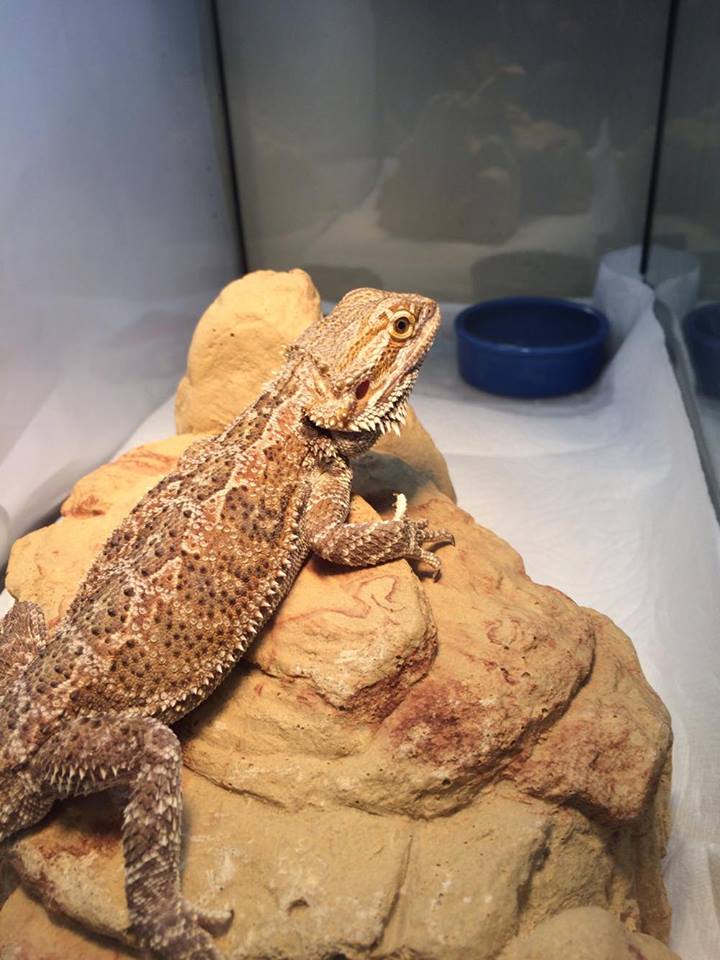Bearded Dragon Growing Up: A Beginner's Guide to Raising a Happy and Healthy Pet
Introduction
Bearded dragons are one of the most popular reptile pets for beginners with their friendly and docile personalities. They are fascinating creatures that are easy to care for and can provide years of joy and companionship. When it comes to raising a bearded dragon, there are a few things you need to know to help them grow up to be happy and healthy pets. In this guide, we will take you through the various stages of a bearded dragon’s growth and offer tips on how to raise them the right way.
Stage 1: Hatching and Early Life

Bearded dragons are born from eggs that hatch after an incubation period of around two months. When the young ones first emerge from their eggs, they are delicate and vulnerable. They will require special care and attention during this period to ensure they grow up healthy and strong.
Housing
For the first few weeks of their lives, bearded dragon babies need to be kept in a small, contained environment. We recommend using a plastic tub or aquarium that is at least 10 gallons in size. The enclosure should have a heat source that maintains a temperature of 80-85°F during the day and 70-75°F at night. A UVB light should also be provided to help the baby bearded dragon develop strong bones and avoid metabolic bone disease.

Feeding
As they grow, bearded dragons will eat a variety of insects such as crickets and mealworms, as well as leafy vegetables and fruits. For baby bearded dragons, we recommend feeding them small insects such as pinhead crickets or small dubia roaches. They should be fed two to three times a day, and their food should be dusted with calcium and vitamin supplements. Water should be provided in a shallow dish and changed daily.
Stage 2: Juvenile

After a few months, your bearded dragon will have grown quite a bit and be ready for a larger enclosure. At this stage, they will be more active and curious about their surroundings. It’s important to give them plenty of space to move around and explore.
Housing
When your bearded dragon reaches the juvenile stage, it’s time to upgrade to a bigger enclosure. A 40-gallon terrarium is a good size for a juvenile bearded dragon. The terrarium should be equipped with a basking light and a UVB light to simulate their natural environment. The basking spot should be around 100-110°F, and the cooler side of the enclosure should be around 75-80°F. The enclosure should also have a hiding spot and a water dish.
Feeding
Juvenile bearded dragons should be fed a variety of insects such as crickets, mealworms, and dubia roaches. They should also be fed leafy greens, vegetables, and fruits. As they grow, the size of the prey they eat will also increase. Make sure to dust their food with calcium and vitamin supplements to ensure they are getting the nutrients they need.

Stage 3: Adult

After about a year, your bearded dragon will have reached adulthood. At this stage, they will have grown to their full size and may have different dietary and environmental needs.
Housing
Adult bearded dragons need a large enclosure to accommodate their size. A 75-gallon terrarium or bigger is a good size for an adult bearded dragon. They still require a basking light and a UVB light, but the temperature and lighting requirements may differ from when they were juveniles. It’s important to provide them with a suitable hiding spot and a water dish as well.
Feeding
Adult bearded dragons should be fed a diet that consists of mostly leafy greens and vegetables, with occasional insects and fruits. Their protein intake should be reduced compared to when they were juveniles. Make sure to dust their food with calcium and vitamin supplements to maintain their health.
Conclusion
Bearded dragons make wonderful pets that are easy to care for and fun to watch. By following the tips in this guide, you can ensure that your bearded dragon is happy and healthy throughout their life. Remember to adjust their environment and diet as they grow and always provide them with plenty of love and attention.
